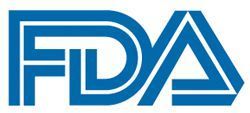Article
FDA Awards Orphan Drug Designation to Gallium Maltolate for Pediatric Glioblastoma Multiforme
Author(s):
The FDA has granted an orphan drug designation to gallium maltolate for use as a potential therapeutic option in pediatric patients with glioblastoma multiforme.

The FDA has granted an orphan drug designation to gallium maltolate for use as a potential therapeutic option in pediatric patients with glioblastoma multiforme (GBM), according to an announcement from Imaging Biometrics, LLC.1
Gallium is a metal that has antineoplastic activity, adheres to transferrin, and enters cancer cells through the Tf receptor1; it disrupts iron homeostasis, which results in cell death.2 In lymphoma cell lines, gallium maltolate has been shown to have greater cytotoxicity than gallium nitrate. The compound has also been found to hinder the growth of these cells that have developed resistance to gallium nitrate, and to have antitumor activity in xenografts of human T-cell lymphoma in mice.
In February 2023, the compound was granted orphan drug designation for adults with glioblastoma multiforme.
“We are very pleased that the FDA has now confirmed that the orphan drug designation for gallium maltolate applies to all glioblastoma multiforme populations, including pediatric patients,” Trevor Brown, chief executive officer of IQ-AI, stated in a press release.
The safety and efficacy of gallium maltolate is under exploration in patients with relapsed or refractory glioblastoma as part of a prospective, single-center, single-arm, open-label, phase 1 study (NCT04319276).3
To be eligible for enrollment, patients need to be at least 18 years of age and have a histological diagnosis of glioblastoma that is grade IV by World Health Organization criteria or molecular features of the disease. They must have received standard treatment comprised of radiotherapy and temozolomide with adjuvant temozolomide completed at least 4 weeks before the administration of the study drug. They also needed to have measurable disease, an ECOG performance status of 0 to 2, and acceptable bone marrow, hepatic, and renal function.
If patients had other active malignant disease within 1 year, previously received chemotherapy or radiotherapy within 2 weeks of study entry, a known hypersensitivity or intolerance to the study compound, or unstable or severe concurrent conditions like severe heart or lung disease, they were excluded. They could not have a history of interstitial lung disease, nor could they concurrently be receiving cytotoxic chemotherapy.
They study utilizes a 3+3 design. In the dose-escalation phase of the research, gallium maltolate is being evaluated at the following dose levels: 500 mg every other day (level -1), 500 mg daily (level 0), 1000 mg daily (level 1), and 1500 mg daily (level 2).
Patients are entered sequentially in groups of 3. If zero of 3 patients experience dose-limiting toxicities (DLTs) with study treatment, then new patients can enter the trial at the next highest dose level. If 1 of 3 patients experiences a DLT, up to 3 more patients would receive study treatment at that dose level, and so on.
The primary outcome measure of the trial is to identify the maximum tolerated dose, and secondary outcome measures include progression-free survival, overall survival, and DLTs.
Data from a preclinical study presented at the 2023 Society of Neuro Oncology Pediatric Conference showed that gallium maltolate provided a significant survival benefit in pediatric glioblastoma.1 Specifically, treatment with the compound resulted in a median overall survival that was double that observed in untreated controls.
Currently, no effective therapeutic options are available for pediatric patients with glioblastoma.
References
- IQ-AI announces orphan drug designation for GaM in pediatric GBM. News release. Imaging Biometrics, LLC. July 13, 2023. Accessed July 17, 2023. https://finance.yahoo.com/news/iq-ai-announces-orphan-drug-140000734.html
- Chitambar CR, Al-Gizawiy MM, Alhajala HS, et al. Gallium maltolate disrupts tumor iron metabolism and retards the growth of glioblastoma by inhibiting mitochondrial function and ribonucleotide reductase. Mol Cancer Ther. 2018;17(6):1240-1250. doi:10.1158/1535-7163.MCT-17-1009
- Oral gallium maltolate for the treatment of relapsed and refractory glioblastoma. ClinicalTrials.gov. Updated September 22, 2022. Accessed July 17, 2023. https://clinicaltrials.gov/study/NCT04319276






%20(2)%201-Recovered-Recovered-Recovered-Recovered-Recovered.jpg?fit=crop&auto=format)

%20(2)%201-Recovered-Recovered-Recovered-Recovered-Recovered.jpg?fit=crop&auto=format)
%20(2)%201-Recovered-Recovered-Recovered-Recovered-Recovered.jpg?fit=crop&auto=format)